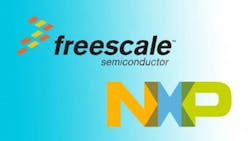Q&A: Tom Starnes Examines the NXP-Freescale Union
What do you think about the NXP and Freescale merger?
Starnes: I'm not sure; it’s not bad, but it’s hard to see that it's a home run either. It has been proposed before, but not come to fruition. I’m not sure what's different now. Being #1 in this or that has lots of caveats behind it, and it’s hard to see great new cost savings that will result.
Wong: Isn't there a lot of overlap in the products made by NXP and Freescale? What will happen in those areas?
Starnes: I mostly research the processor products. Both Freescale and NXP have had similar offerings since they were Motorola and Philips, although Motorola was much more engaged. Right now, Freescale has microcontrollers (MCUs) both for the spectrum of general-purpose markets and targeting automotive applications. NXP does as well.
In non-overlapping processor categories, Freescale also has some very high-performance microprocessors (MPUs), now mostly utilizing the well-established Power architecture, and an applications processor. It is curious that the NXP announcement made no reference to either of these product types, even though NXP has no similar product. In fact, the Power architecture is critical to the higher-end of Freescale’s automotive products (for things like drive train) and to the billion-dollar networking business enjoyed by Freescale. On the other hand, and at the other end of the spectrum, NXP has some highly specific crypto processors for smart cards and bank cards, an area that Freescale bowed out of long ago.
But let’s look at those overlapping MCU products. Freescale has assorted proprietary MCU architectures, PowerPC, and ARM in its MCUs, whether used for automotive applications, industrial, or all of the others (PPC & ARM only in 32-bit). NXP (Philips at the time) worked hard to fit the old not-for-real-time ARM7 cores into its MCU product line (largely made up of old 8-bit 8051 extensions). NXP was a leader in formulating the new prime-for-real-time Cortex-M ARM cores and embraced them quickly. Earlier, Freescale made tepid efforts to utilize ARM in its MCU products, but just couldn’t loosen the love embrace of its coveted proprietary MCU architectures. Maybe four years ago Freescale started turning a corner with ARM. Then two years ago, when Geoff Lees brought his spirit and leadership from NXP’s MCU group to Freescale, Freescale started becoming a significant force in ARM-based MCUs.
Interesting story, but it leaves both NXP and Freescale with many ARM-based microcontrollers as the driving force in its MCU business. There are going to be quite-similar parts in the catalogs of two companies that have been chasing the same markets. NXP lists 325 parts in its ARM-based MCUs, while Freescale probably pushes 1000 ARM-based MCUs. There is surely overlap in the functionality of that many parts from two companies. Removing duplicates could save the new company some profit margin – a task that must be carefully balanced against customers lost when their parts are deleted from the catalog.
Wong: What will happen to the name?
Starnes: I'm guessing that the NXP name will remain and “Freescale” will fade into the annals. It’s a shame companies spend so much time, effort, and money building a brand that later vaporizes. It happens all the time with bankruptcies and acquisitions. The Motorola brand is a shadow of its former glory, frittered away by a string of hopeful vultures. Outside of semiconductors, Philips still rightly holds its high brand equity (if only people would remember there’s only one "L" in the brand.)
“Freescale” was kind of a mess when the name first came out, with people I know laughingly pointing out that typing Freescale into Google early on would get a computerized response of “Do you mean ‘Firesale’?” or “I guess all the good names were already taken.” There was nothing free available and scale didn’t refer to anything. But you can bet some big money was handed to some agency for coming up with the name and logo.
NXP is more nondescript, may come from “Next Experience,” somewhat resembling “Next Philips” or “Next Phase,” and plays well to the three-letter preferences that many have for corporate names. Names may not be as important in such B2B companies, because businesses keep up on their vendors much better than consumers ask “who, really, is producing this soap?” But, businesses are made up of humans, and the changeover still can have a negative (or positive) impact.
Wong: Will I see you next year at FTF (Freescale’s annual developer's conference)?
Starnes: I don’t know that NXP has a developer’s conference, and companies go back and forth supporting industry conferences or their own in-house conferences. The industry conferences may not draw the best-targeted potential customers and the visitors can walk across the aisle to immediately compare with competitors. The proprietary conferences can build a lot of “community” amongst OEMs and users, but do a lot more preaching-to-the-choir than reaching out to new markets or reeling in competitors’ customers.
You’ll remember that FTF started out decades ago as Motorola’s Smart Networks Developers Forum (SNDF), back when this Ethernet thing was coalescing. Bringing third parties and developers together didn't only help Motorola's growing networking success, it also helped advance networking everywhere. At some point, Motorola expanded the conference to include the other three-quarters of their products.
It would be wise for NXP to further expand the conference to include former NXP products and developers, maybe with the first couple of years emphasizing the synergies of using products from both companies together! I think that would help lead the world to see the benefit of the acquisition.
Wong: So that leads to the ultimate question: Will this new, larger company work out?
Starnes: I’m not qualified to address the finances of companies; that’s for bankers and investors to do. But I always look at these mergers and acquisitions from a couple of points of view, usually with the users of the companies' products—the OEMs that design electronic systems from the chips—foremost in my mind.
One is whether these two companies will be able to do something together that they couldn't have done when apart. Other than pride and stubbornness, there’s nothing to keep, say, a Freescale from showing most of their MCU and MPU products in datasheets and application notes working seamlessly with NXP high-performance mixed signal components, and vice-versa, including the driver software and demo boards. There might be a little stepping on toes, but that’ll happen whether the companies are under one roof or two. Other vendors might feel excluded, but again, what’s different if the two companies merge?
Two separate companies ought to be able to work out ways of giving favorable pricing to “partner” vendors, if that’s important. If one guy is always making the higher profit margin, even if they’re under one roof, the products that don’t contribute appropriately to corporate margin goals will eventually be “dealt with” one way or another. In the end, I want it to be easier for a designer to put his electronic system together with the best parts for the best price.
The second is what overlap versus synergies coupled with reaches into new markets do the joined companies have? These have to be real. As I've already indicated, that has to be carefully analyzed (and not just with financials) at a detailed level. Then again, you need to look at “couldn’t these two have just partnered together to attain the same results?”
Finding cost savings at a merged company can be difficult. Merging databases and software, as well as retraining the broader company in all of the products, can take a very long time. Blending of cultures and management styles can often be difficult. Meantime, the business must keep running smoothly.
The companies’ customers also need to be considered. Every time A and B unify their administrative systems, sales force, part numbering, pricing schemes, websites, product documentation, and way of doing business, it makes a mess of things for the customers, too, as they try to keep up. It’s even worse when chips start being produced in other facilities or even terminated—the new qualifications and engineering change orders are costly change with no material benefit. If a part is discontinued, it becomes a huge expense to a customer. These effects are rarely assessed properly, especially to those not intimate with our industry. All that “we're ranked #1” stuff really doesn’t matter to a customer if “we” can’t provide the best solution to my (the customer’s) specific need.
About the Author

Tom Starnes
Analyst
Tom Starnes is arguably the best-known embedded processor analyst in the semiconductor industry. Covering a range of products, Starnes' insight, coupled with his no-nonsense approach to processor and end-use analysis has led to his becoming one of the most sought-after consultants in the world of processors. It is through his hard-hitting insights that many key players in this industry have found their focus and refined their product strategies.
William G. Wong
Senior Content Director - Electronic Design and Microwaves & RF
I am Editor of Electronic Design focusing on embedded, software, and systems. As Senior Content Director, I also manage Microwaves & RF and I work with a great team of editors to provide engineers, programmers, developers and technical managers with interesting and useful articles and videos on a regular basis. Check out our free newsletters to see the latest content.
You can send press releases for new products for possible coverage on the website. I am also interested in receiving contributed articles for publishing on our website. Use our template and send to me along with a signed release form.
Check out my blog, AltEmbedded on Electronic Design, as well as his latest articles on this site that are listed below.
You can visit my social media via these links:
- AltEmbedded on Electronic Design
- Bill Wong on Facebook
- @AltEmbedded on Twitter
- Bill Wong on LinkedIn
I earned a Bachelor of Electrical Engineering at the Georgia Institute of Technology and a Masters in Computer Science from Rutgers University. I still do a bit of programming using everything from C and C++ to Rust and Ada/SPARK. I do a bit of PHP programming for Drupal websites. I have posted a few Drupal modules.
I still get a hand on software and electronic hardware. Some of this can be found on our Kit Close-Up video series. You can also see me on many of our TechXchange Talk videos. I am interested in a range of projects from robotics to artificial intelligence.


